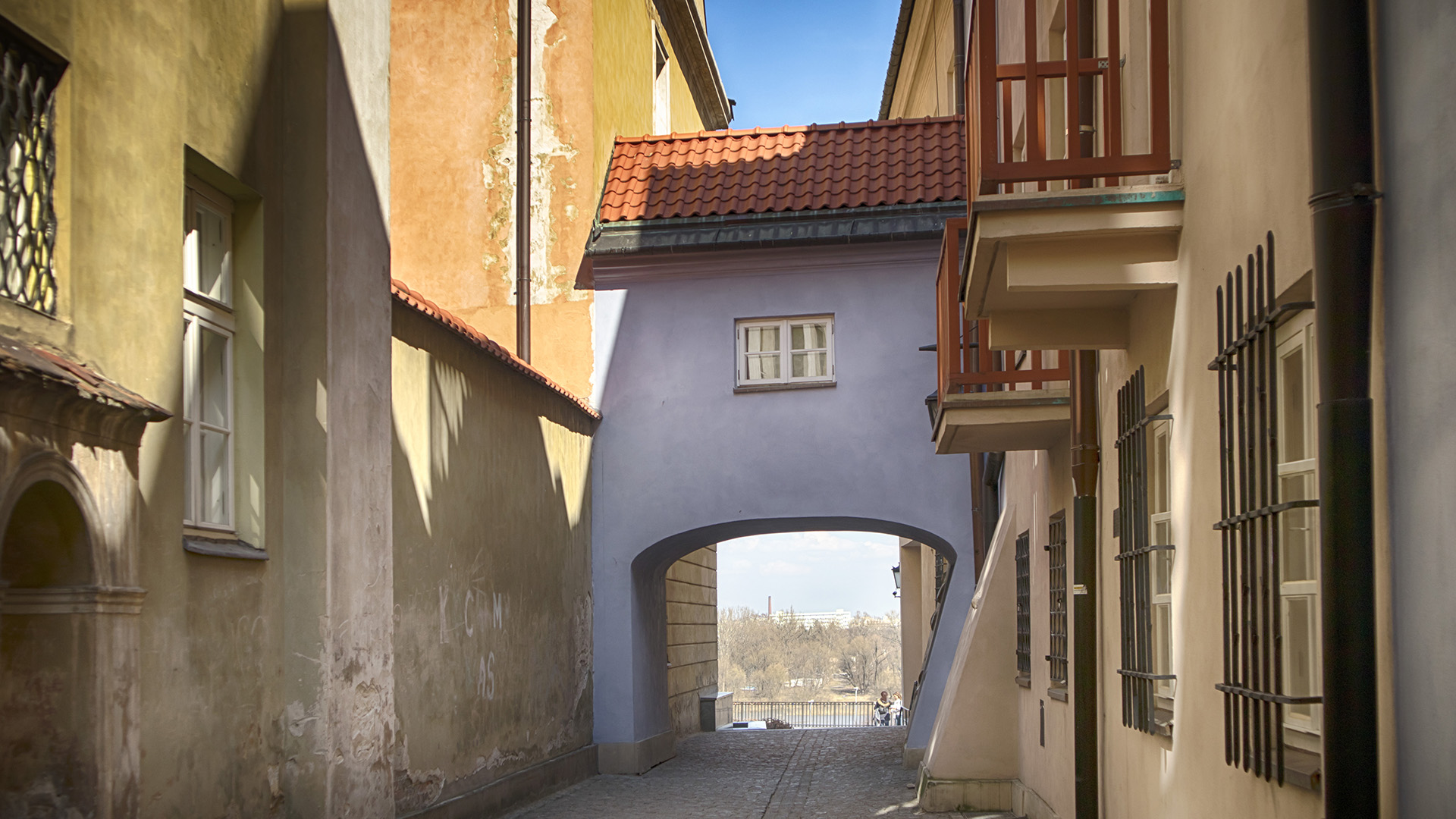
The moving image
Polina Maloshchinskaia on Russian animation, Us, and The Half Of It | Issue 18 | 2020


Amid the chaos of war, artworks can go missing. This is the tale of a Venetian artist in Poland. It takes place in the eighteenth and the twentieth centuries.
Bernardo Bellotto was an artist of the eighteenth century whose fame was almost certainly eclipsed by that of his uncle, the acclaimed artist Giovanni Antonio Canal, aka Canaletto. Both hailed from Venice. Canaletto died in 1768; today, his Venetian cityscapes can be found in galleries and museums throughout the world. Bellotto’s story has a twist to it.
Like Canaletto, Bellotto specialized in vedute—topographical depictions of urban landscapes. He worked on commission for monarchs across Europe, with his final appointment, in 1768, taking him to Poland, where he became court painter for the last king of Poland, Stanislaw August Poniatowski. His final works—meticulous paintings describing the streets of eighteenth-century Warsaw—came into their own almost two hundred years after their completion.
Amid the chaos of war, artworks can go missing. In the twentieth century, Bellotto’s paintings were intended to adorn the rooms of the Royal Castle in Warsaw but, as a precaution against the bombing raids of the Second World War, they were moved to the National Museum and were subsequently confiscated by the Nazis—part of their efforts to destroy any documentation of Polish history and bring about the ‘Germanisation’ of Poland. The paintings disappeared from view.
One of history’s darkest chapters, the war caused destruction on an unprecedented, unsurpassed scale across Europe and Asia. In the aftermath of the Warsaw Uprising of 1944, most of the city of Warsaw was reduced to rubble by the Nazis. Much like Poland itself, it barely existed.
The Polish people have a history of resilience. Invaded and partitioned (yet again) first by the Nazis and then by the Soviet Union, they fought back. The Warsaw Uprising represents the largest underground resistance operation organized in occupied Europe. After their city was razed in retaliation, those Varsovians (residents of Warsaw) who were still there after the end of the war picked up shovels and began clearing the rubble and debris from the streets to help with the rebuilding of their city. Brick dust filled the air. The government of the new Polish People’s Republic embarked upon the monumental task of rebuilding the nation’s capital.
At about the same time, in 1946, Bellotto’s paintings reappeared and were returned to the National Museum. Bellotto’s painstaking vedute became a source of inspiration for the restoration of Warsaw—culminating, in 1980, in the designation of the Old Town of Warsaw as a UNESCO World Heritage Site.
Today, as you walk the Royal Route, you can see displays at sites along the way that show the works by Bellotto upon which the reconstructions were based. The original paintings are now on display in the Canaletto room in the the Royal Castle. Why ‘the Canaletto room’? Toward the end of his life the Venetian artist (perhaps thinking about his legacy) adopted his uncle’s sobriquet. Bernardo Bellotto died in Warsaw in 1780. He was almost sixty. His legacy is there for all to see along the banks of the Vistula River in Warsaw.
We tend to think of art as being inspired by our surroundings but in this period of Polish history, art served as the inspiration: life imitating art. Bellotto’s work as an artist was instrumental in the recreation two centuries later of the scenes he depicted so faithfully. Only the people were missing.
Sebastian Poplawski is a lawyer in the New York office of Norton Rose Fulbright
© Norton Rose Fulbright LLP 2025